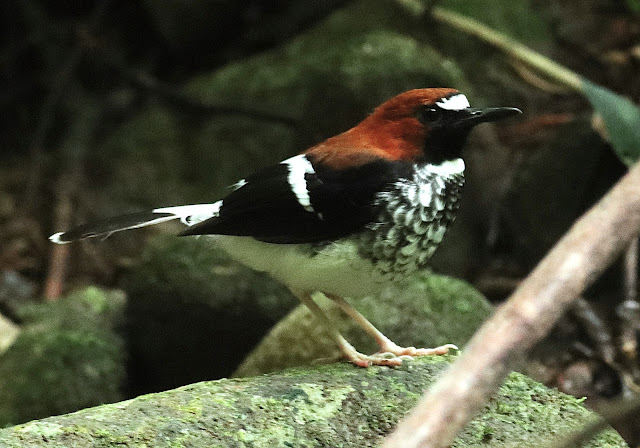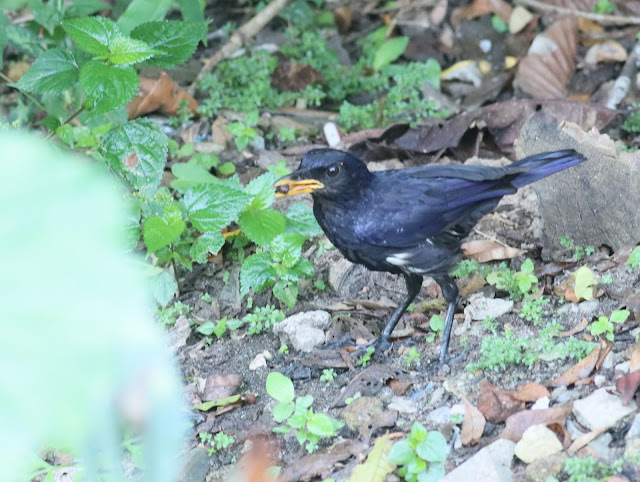From the three months (July to September), I believe that's when all the juvenile birds start appearing. I saw a few of them during my routine jungle trekkings.
White-rumped Shama
It was quite skittish as it refused to come out in the open. Most of the time it tried to conceal itself among the leaves which is a good sign.
White-rumped Shama.
May you live thru your lifetime so that you can sing for us whenever we see you inside the trail.
Chestnut-naped Forktail
First time seeing a juvenile of this forktail out in the open. Most of the time you can either hear them or spot them in glimpses as the adults like to traverse along the jungle streams while making the sound like "ki ki ki".
Chestnut-naped Forktail
This juvenile is probably just learning to fly as it was seen skipping along the trail.
Chestnut-naped Forktail
Not too far behind is probably one of its parent.
Chestnut-naped Forktail
It was seen hunting for insects among the boulders.
Grey-and-Buff Woodpecker
Male
























